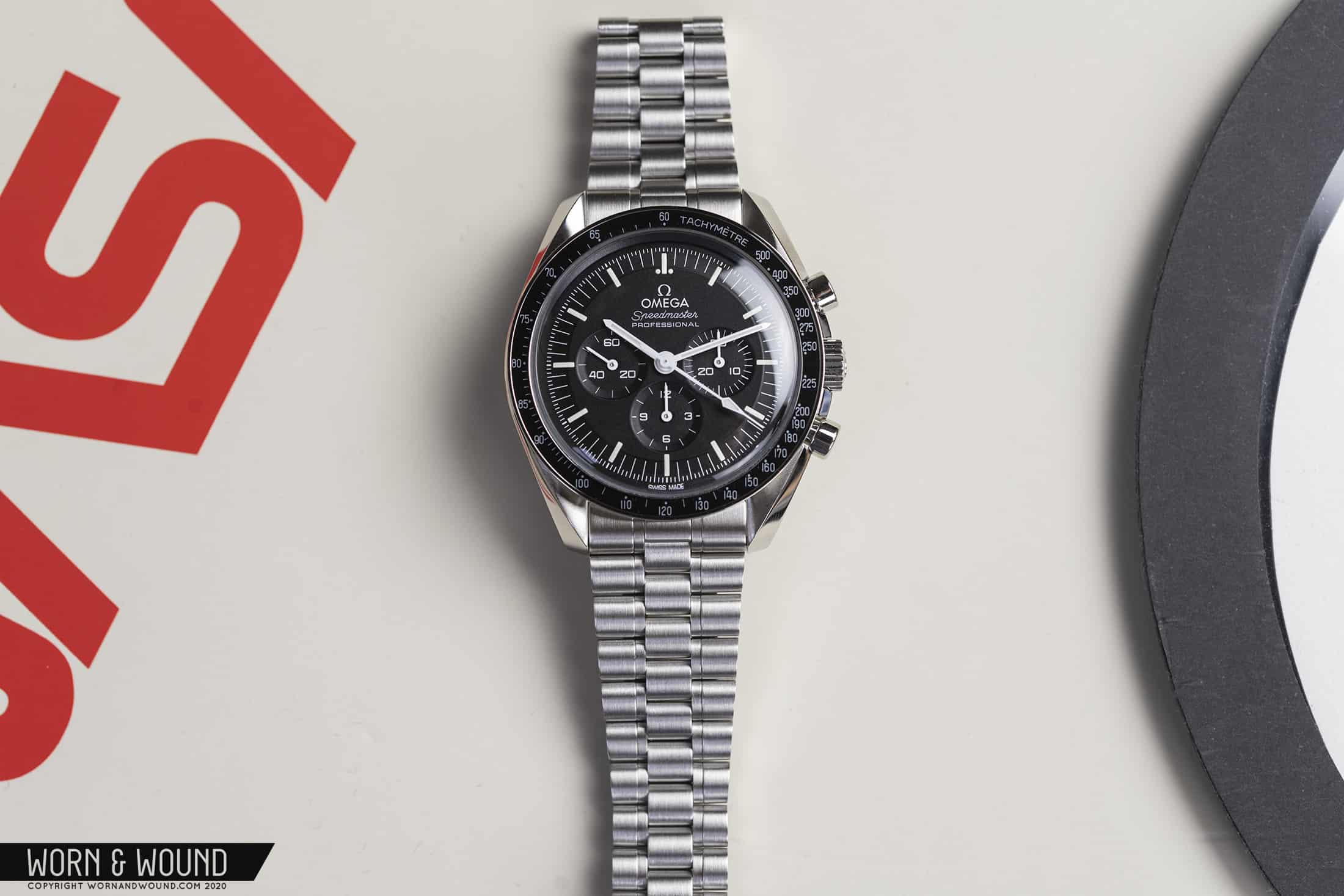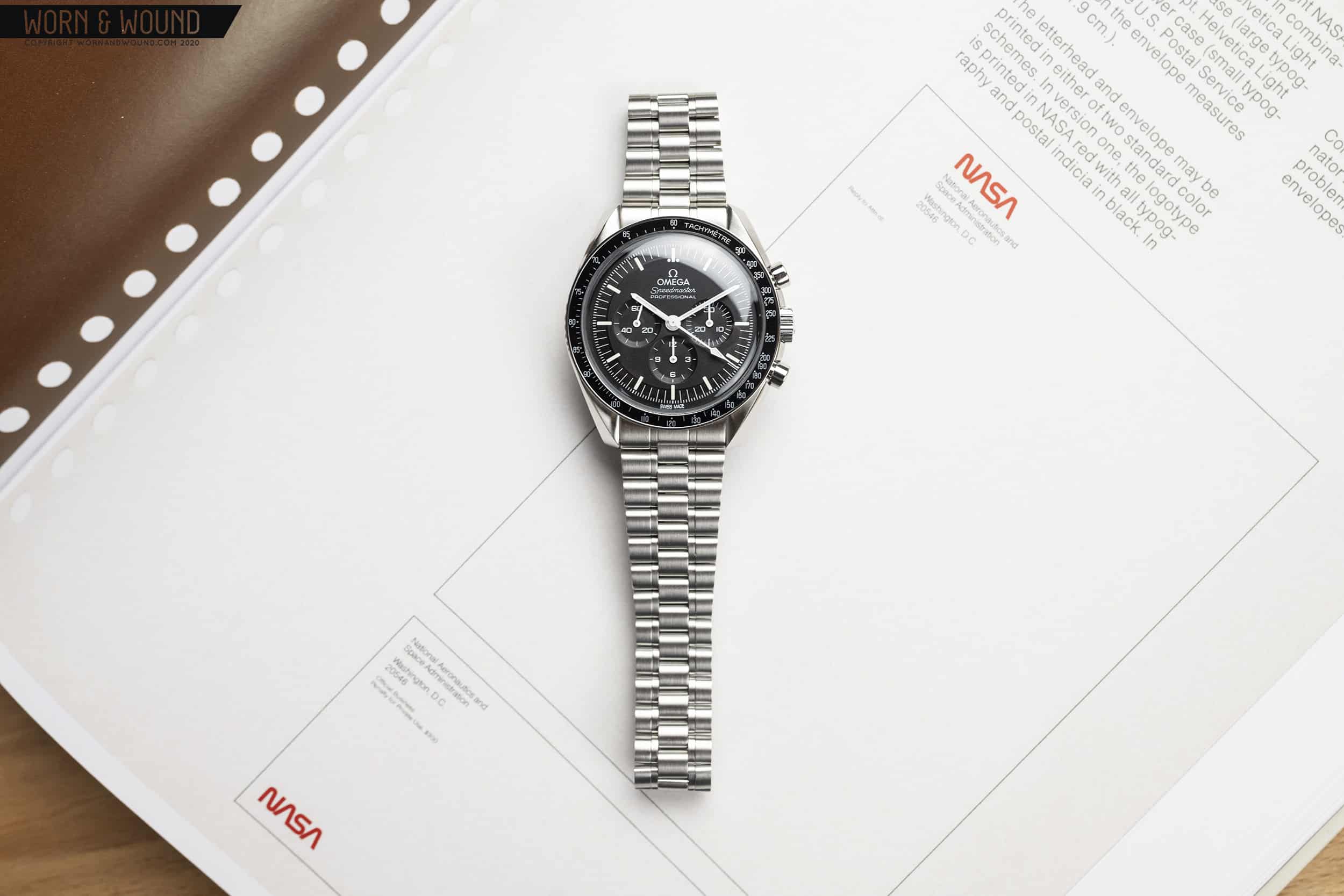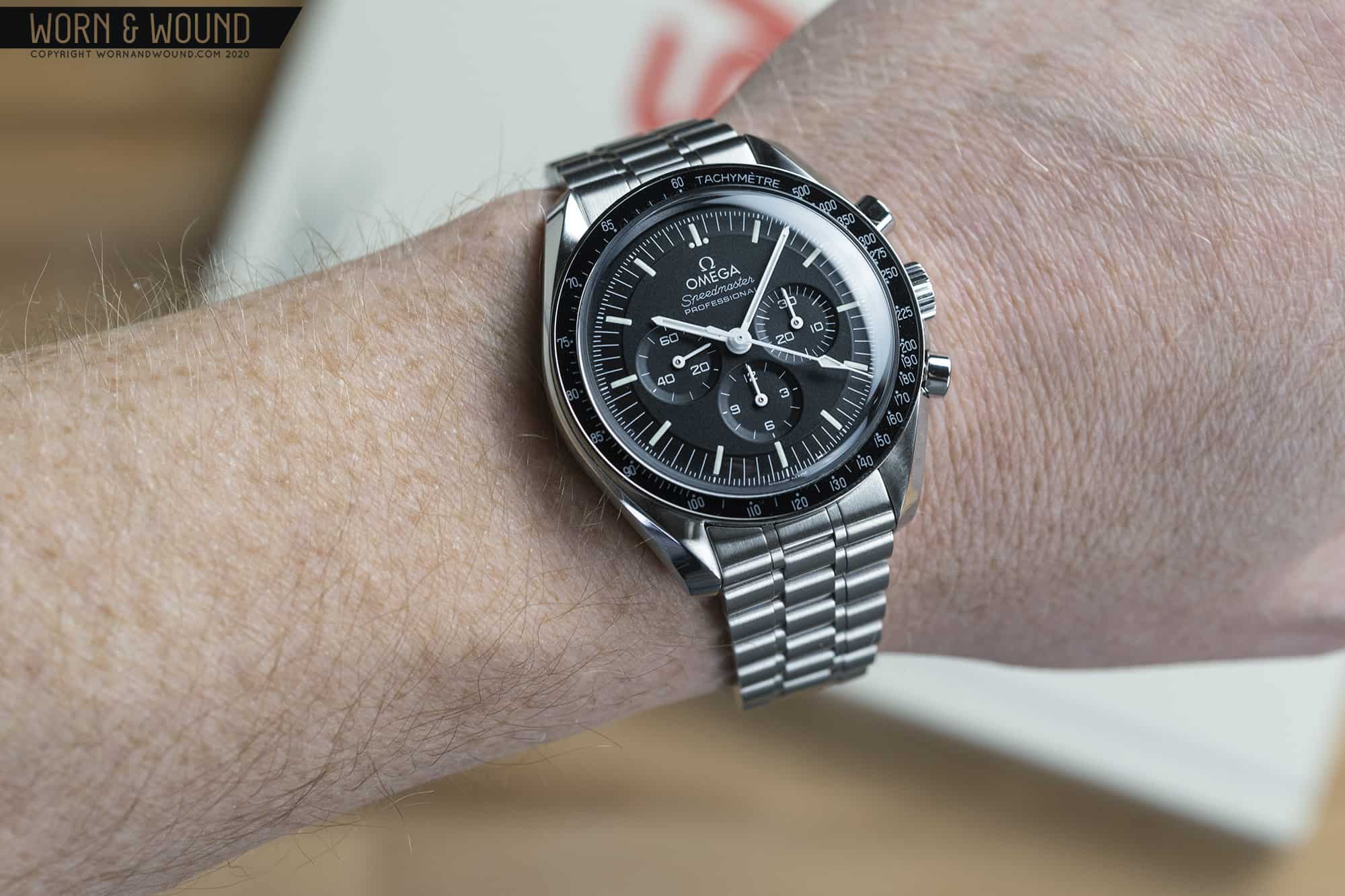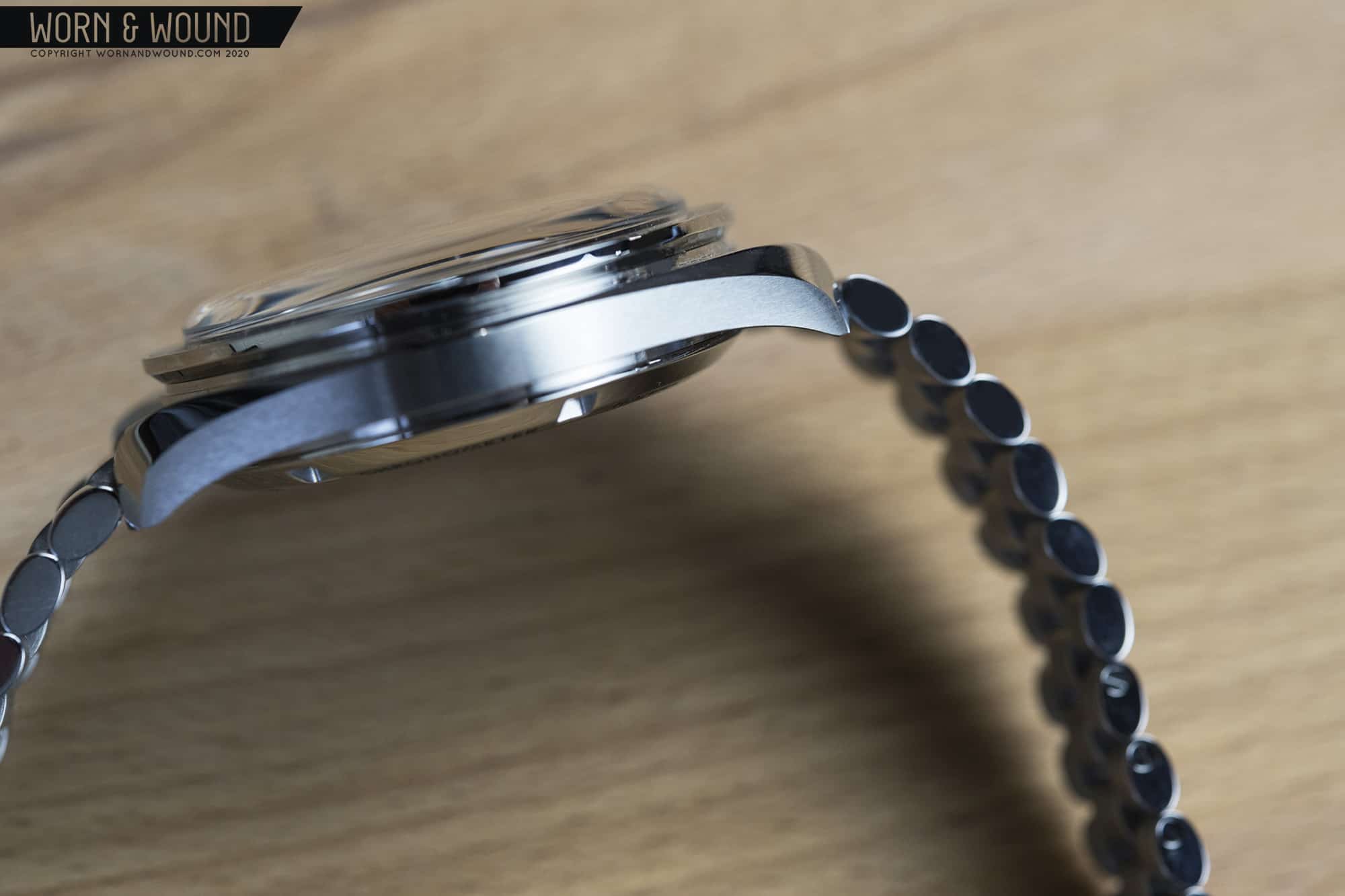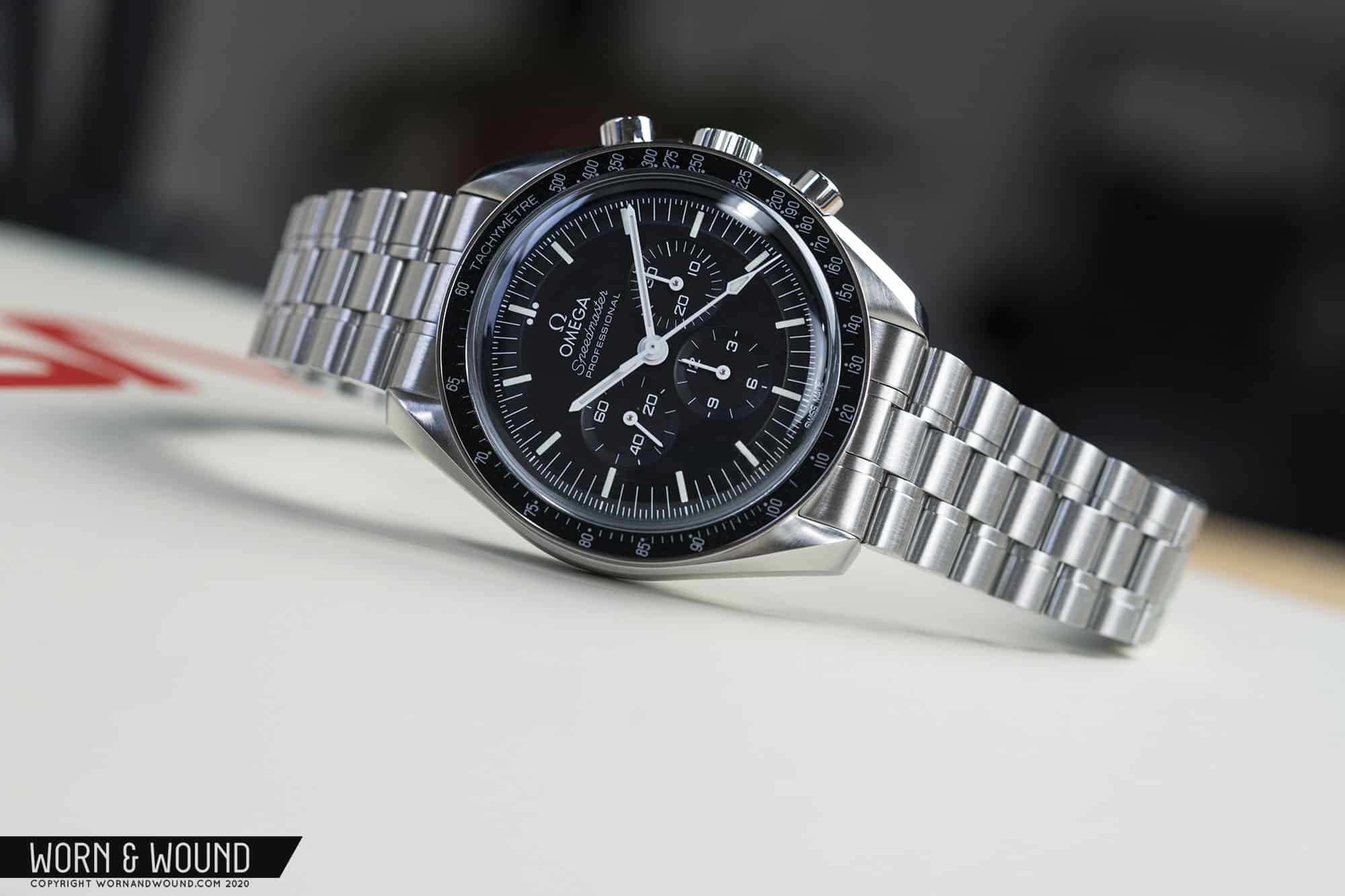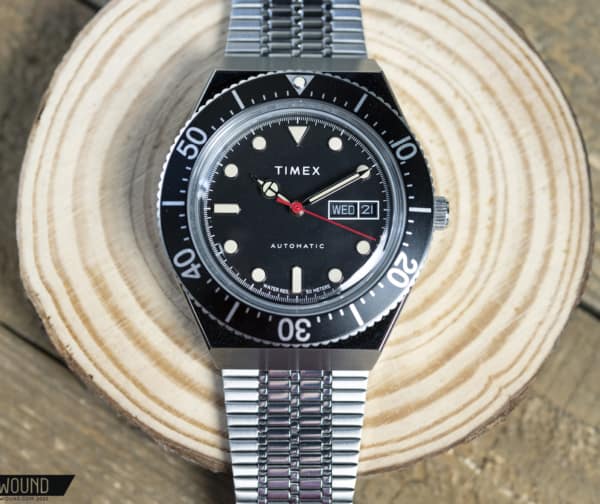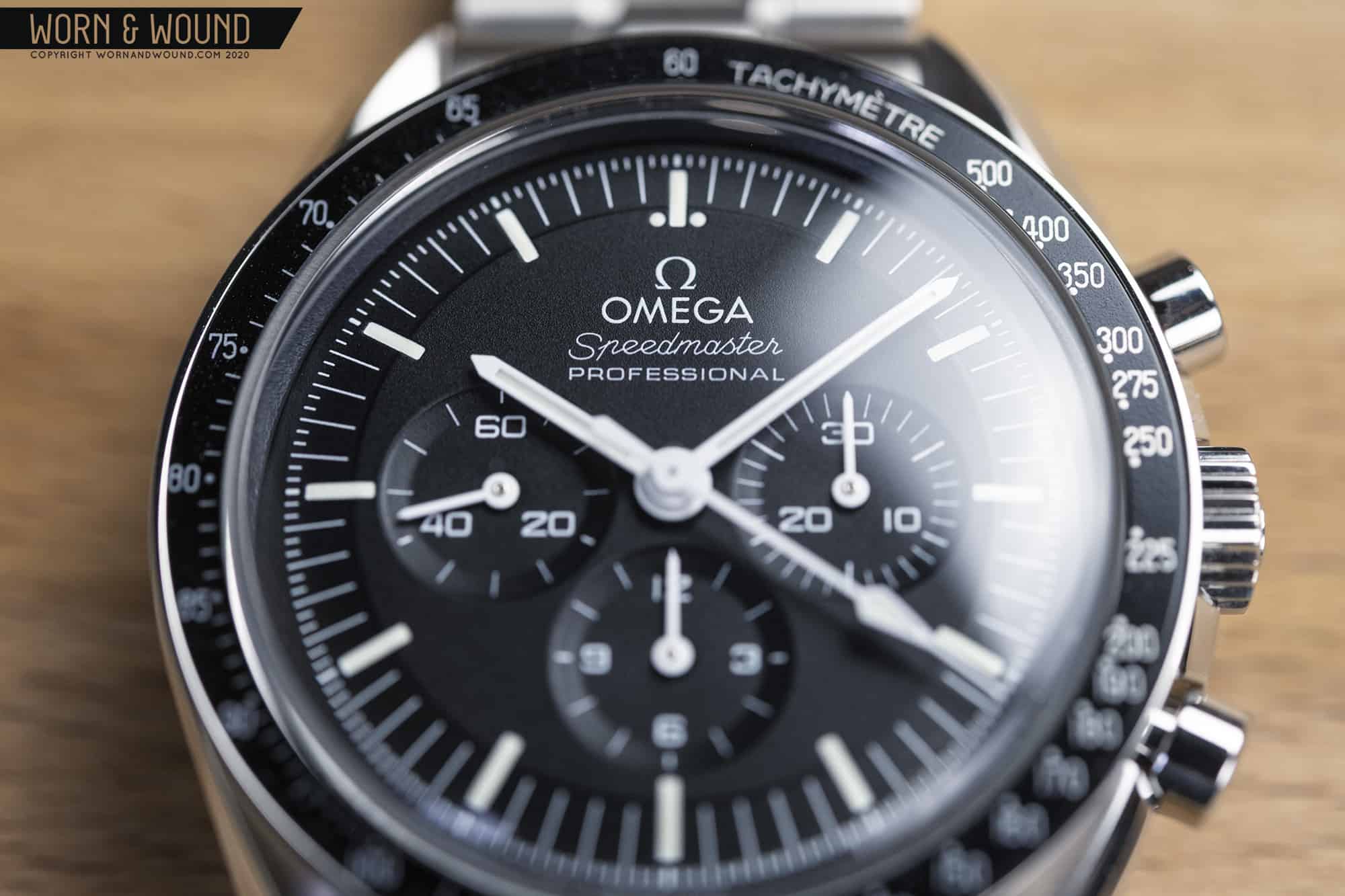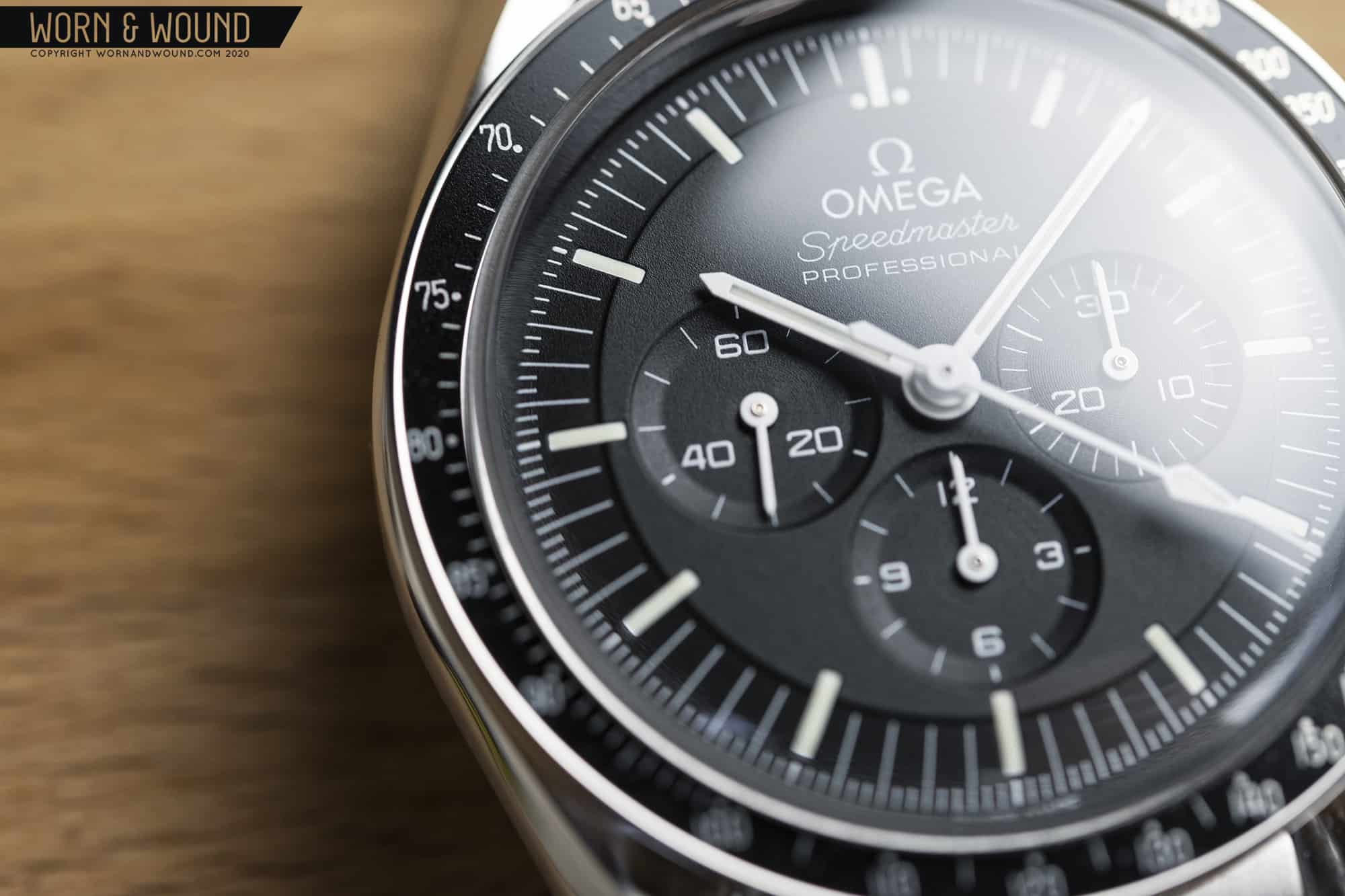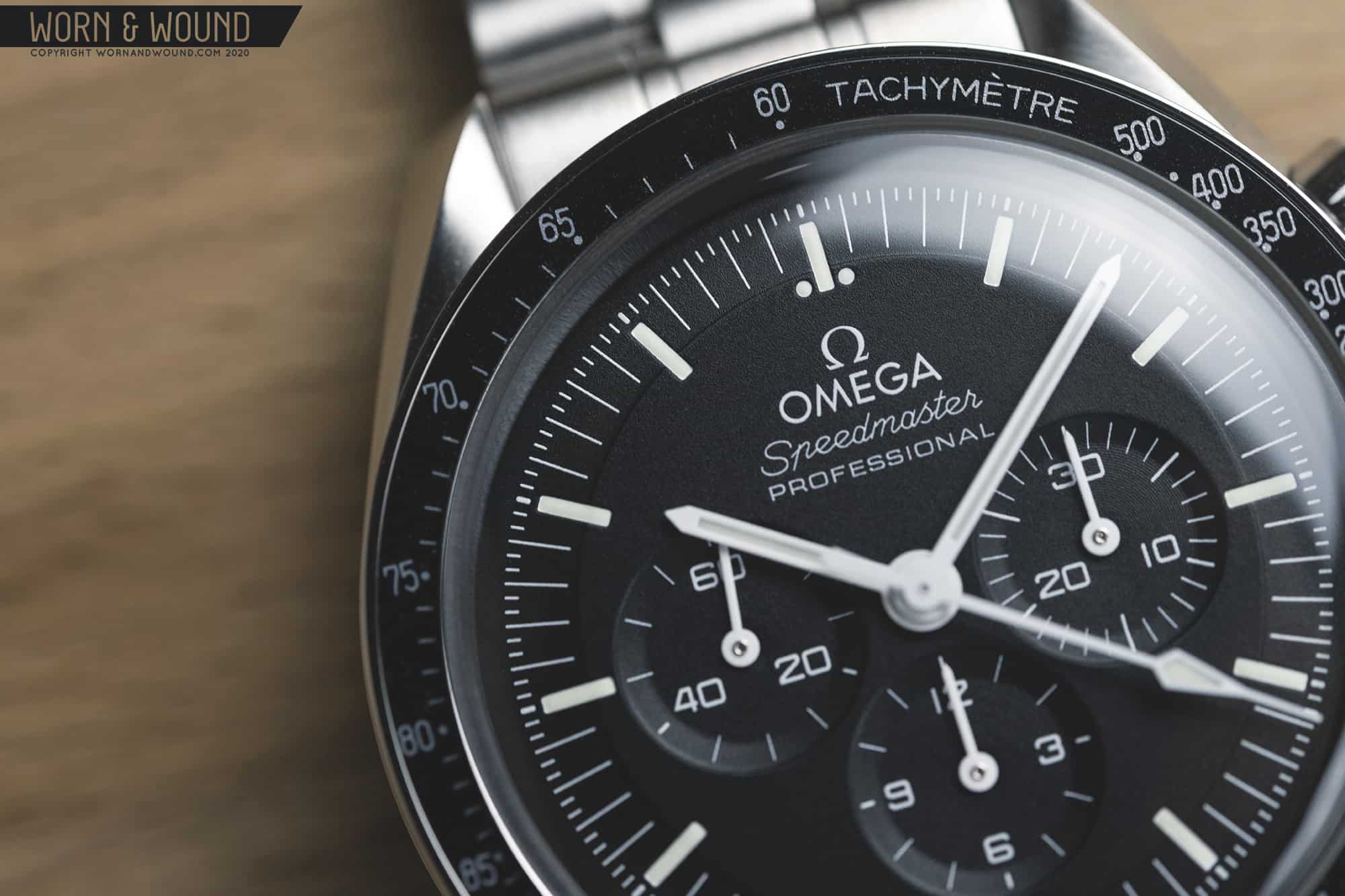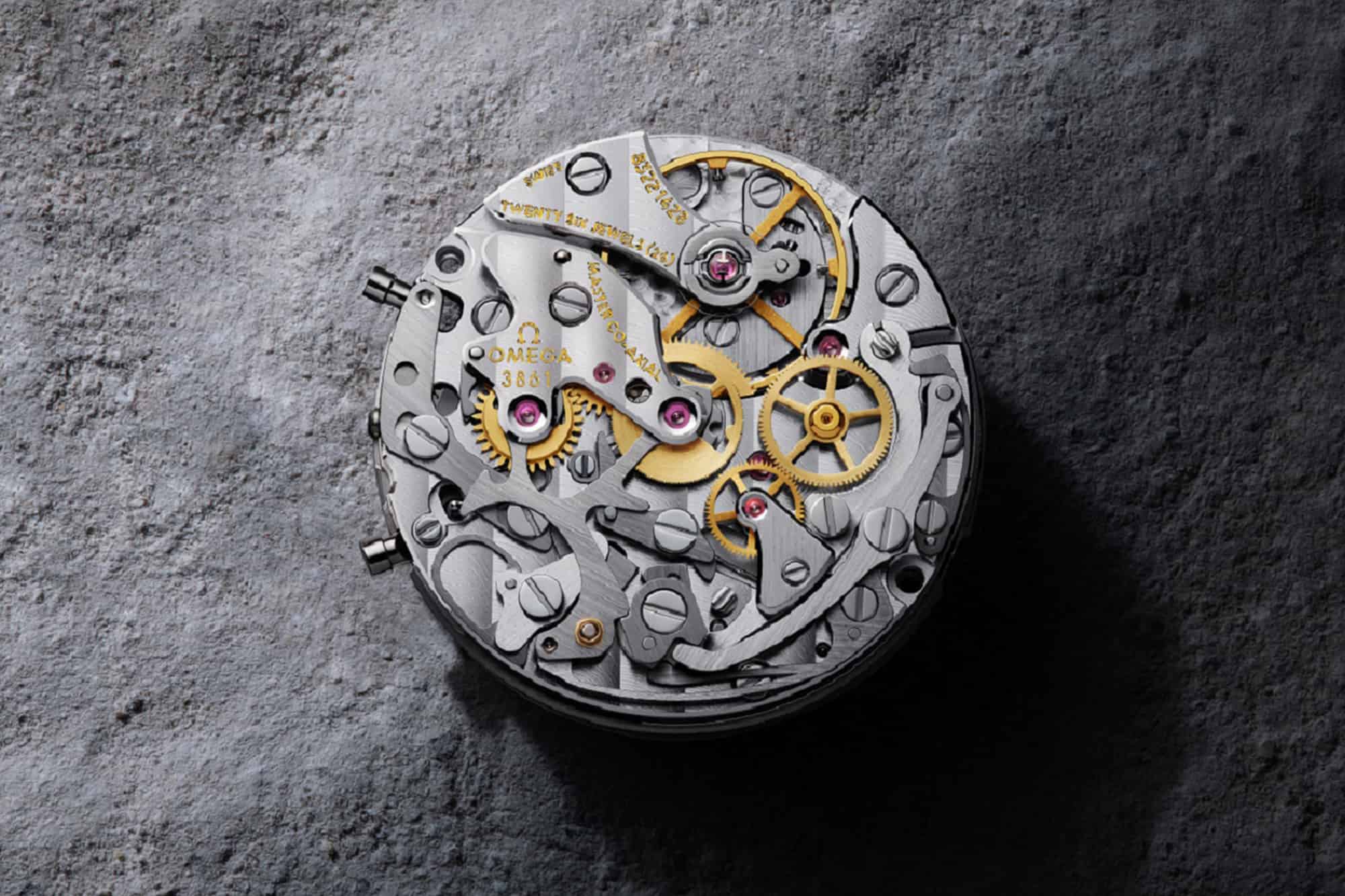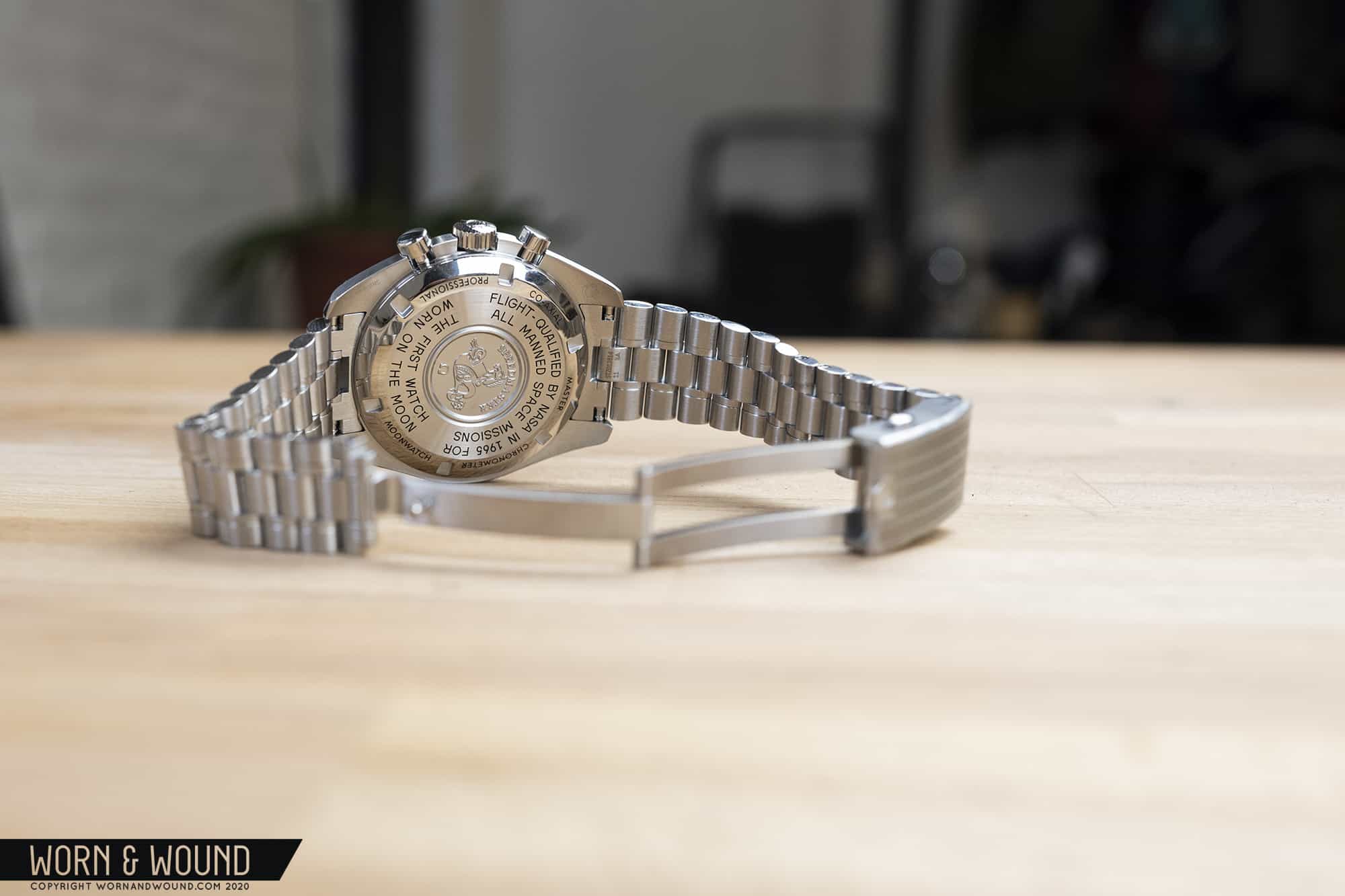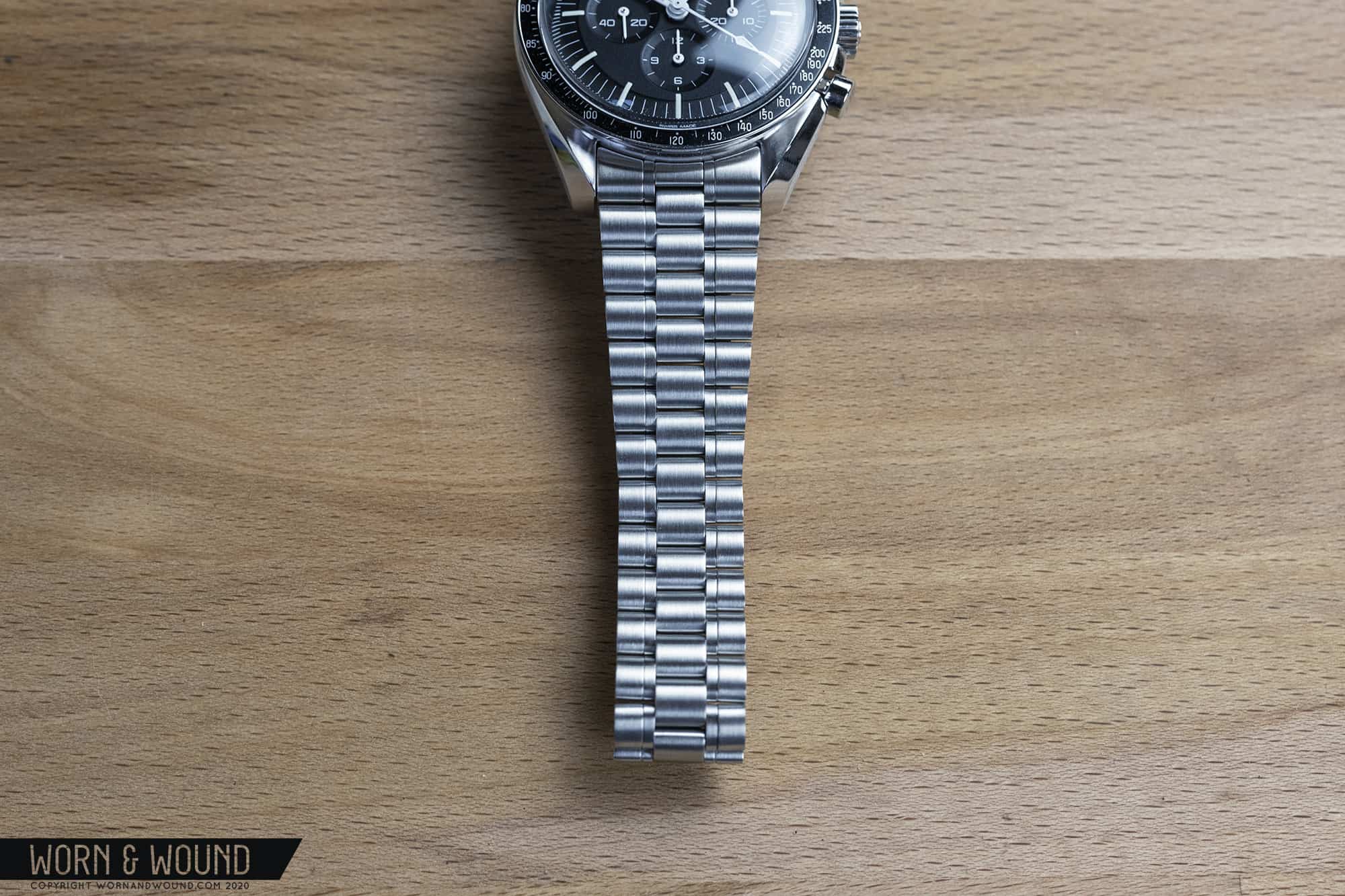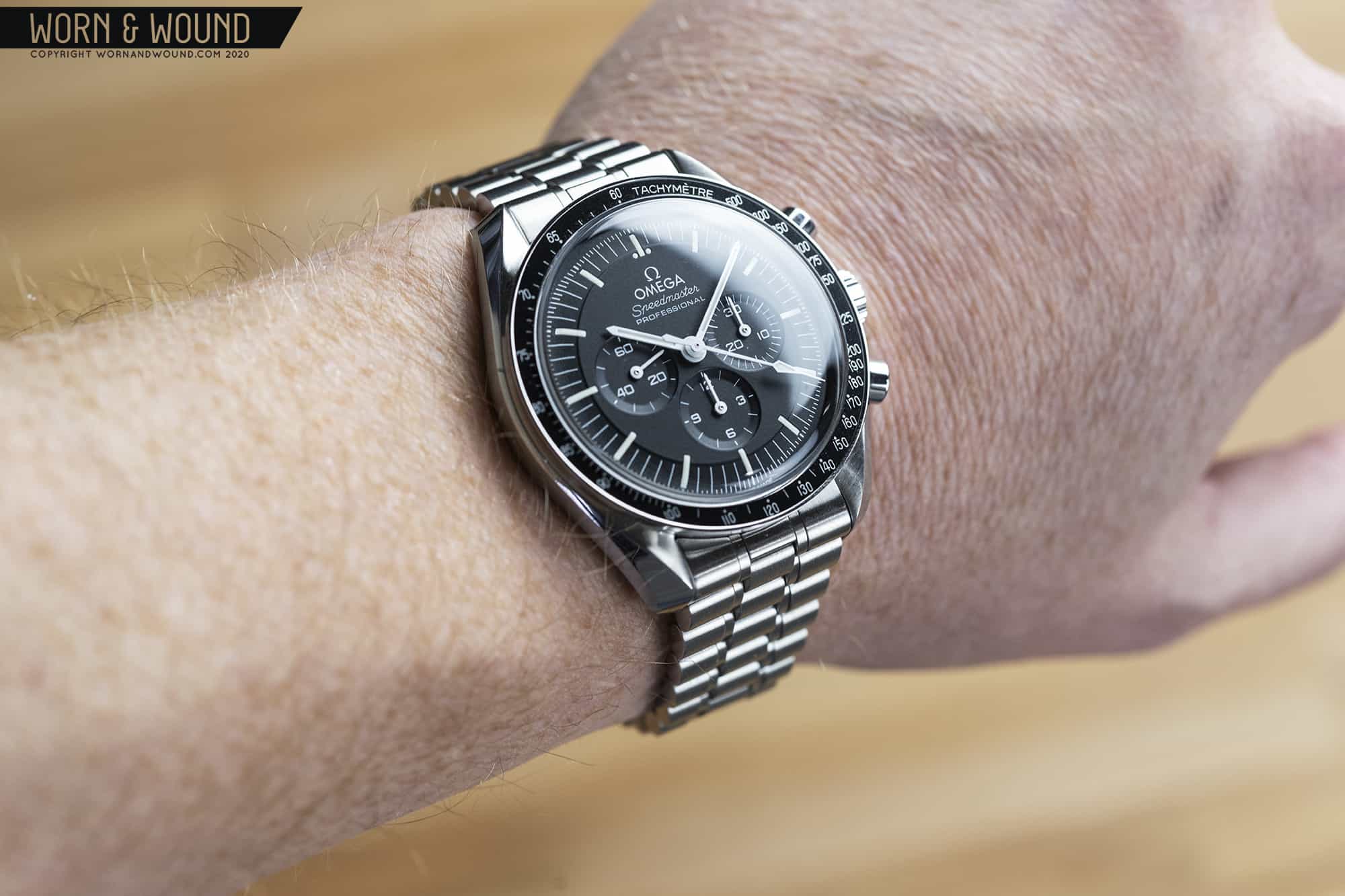Following the announcement of their new Speedmaster last week, Omega has begun rolling out the first examples to their lucky new owners. As core models of the Speedmaster family, new Moonwatch Professional watches don’t come around too often, so this is a momentous occasion for enthusiasts and collectors alike. Changes aren’t revolutionary, but they are considerable and most definitely notable. When such a watch is released, it’s important to step away from the considerable heritage and make a judgement free of bias (as positive as it may be). So, how does this Speedmaster hold up on its own right? We go hands-on with the Hesalite model on steel bracelet to find out.
Hands-On With The New Omega Speedmaster Moonwatch Professional
Hands-On With The New Omega Speedmaster Moonwatch Professional
The Case
The Speedmaster has always been a watch difficult to gauge by the numbers alone. The Moonwatch Professional has always been 42mm on paper, but it doesn’t really wear like one. It’s the same situation here, with the new watch wearing closer to 40mm in practice. Measuring from bezel edge to bezel edge you’ll find it is 40mm, with the case bulging a touch on either side accounting for the other 2 mm. Lug to lug the new Speedmaster measures 47.2mm, making it an easy wear within the confines of my ~7 inch wrist.
The appearance is as tidy as it looks on the wrist, thanks in part to the more recessed pushers which sit much deeper into their guards. Additionally, the polish of the lug which creates the ‘twist’ appears more compact than prior models, with a less dramatic curve from the top down, but a more dramatic break toward the tip of the lug.
Sitting at just north of 13mm in thickness, the new Speedmaster isn’t a thin watch, but it’s also not distractingly thick, especially compared to other chronographs out there. The shape of the mid case does an excellent job of hiding the thickest portion and nestles neatly into the swell of the wrist.
Overall, this is not a small watch, but there are some clear design considerations that keep it manageable on the wrist. Hell, I’d go so far as to say this is a downright comfortable watch. Current and prior Speedmaster owners will find nothing to complain about here, and will likely find one of the most wearable twisted lug Speedies of all time.
The Dial
A glance at the dial will reveal a very familiar looking scene. It’s classic Speedmaster with registers at 3, 6, and 9 o’clock each nestled into their recessed dish. Thin pencil hands track against lumed hour bars with the stoic branding printed on at 12 o’clock. Opting for the sapphire variant will get you an applied Omega mark, but the printed fits just fine in this application.
A closer look and you’ll notice a few changes, however, that create a perceptible shift in the overall appearance of the watch. First is the stepped dial, which makes its return to the Moonwatch after a near 50 year absence. It’s not a detail that jumps out at you but in the right light adds a lot of character to the dial.
Additionally, the number of hashes between the minute marks has been cut in half, going from 4 to 2. I know that sounds like a tiny change but the resulting effect is tangible. It opens the dial up just enough to release some of the tension seen in the prior model, and while I suspect this will be at the center of some debate among enthusiasts, it’s a welcome change in my book.
A sharp eye will also notice a teardrop shape to the counterweight of the timing seconds hand, which again presents a bit softer than the squared off end of the outgoing model.
Each of these are small changes in their own right, but combine to create a clearly well thought out evolution to the Moonwatch. It’s subtle, but the feeling is distinct. These are the types of small changes you don’t really see from a brand like Rolex, and signal a nod to heritage without taking a step back.
The bezel insert remains aluminum, and the only change here is a big one for vintage enthusiasts. The dot marking the number 90 on the tachymeter is placed above the number (more accurately, the number is placed below the dot), returning to its proper DON roots. It’s a bit like AP returning their logo to 6 o’clock on the dial of the Jumbo: if you know, you know. Some expected a ceramic execution for the bezel, with aluminum feeling almost like a novelty these days on watches in this price segment, but it’s a practical and welcome retention, as nothing prone to shattering would find itself accompanying astronauts on their journey.
The Movement
Perhaps the biggest change to the new Speedmaster is the movement within. It’s certainly the most argued over, but in reality this move seems inevitable. This Speedmaster is fitted with Omega’s caliber 3861, and it brings a *clutches pearls* co-axial escapement to the Moonwatch Professional for the first time. Other than that, you’ll find a lot of similarities to the outgoing 1861 caliber. It’s hand wound, lever and cam operated chronograph that is now anti-magnetic to 15,000 gauss, and is even METAS certified, amounting to what is surely the most accurate and capable Speedmaster Professionals ever built.
It’s also quite the looker, and should you opt for the Sapphire variant you’ll be treated to a full view of it through an exhibition back. This may be the single biggest factor pushing folks to this model, but there’s another factor at play here that will make that decision a tough one.
The Bracelet
Upon first holding the new Speedmaster the one item that made the single biggest impression on me was the new bracelet. Not only in aesthetic, but in feel. This bracelet is on point, and I have no doubt it will be the deciding factor for current owners on the fence about jumping to the new one. First off, there’s dramatic taper from the 20mm lug span to the 15mm clasp. It’s noticeable right off the bat and feels absolutely dapper on the wrist. The construction is also top notch for a watch in the price range, easily forming over the wrist. It’s similar in feel to Rolex’s Jubilee style bracelet. In short, it’s very good.
If you opt for the Hesalite Speedmaster you’ll get a fully brushed bracelet, and this is the single biggest shift in appearance that should be influencing your decision. The Sapphire model gets polished accent links between the three large links and will bring a flair of presence to the watch that you may or may not appreciate. The clasp itself gets 6 lines cutting through it which add some visual weight to the otherwise svelte bit of steel. There are two adjustment pins within for fitting, which is acceptable given the size of the links that can be removed.
If you’re debating between the strap and the bracelet, I’d push you toward the latter. Even if you’re not the type to wear bracelet I’d wager this would be an exception. That’s not to say this one won’t look great on all manner of straps, because it most certainly will, but the bracelet is a viable option for daily wear.
Conclusions
So, should you buy the new Speedmaster Moonwatch Professional? Well, that depends, of course. It’s certainly not a cheap watch with an MSRP of $6,300, and if you’re reading this odds are strong that you already have a Speedmaster of some sort in your collection. If you don’t, I would not hesitate to recommend this watch. If, however, you do own a Speedmaster, things get a little trickier. While different, the new model isn’t that dramatic a shift to justify adding it alongside your current Speedy Pro. The bracelet and the movement are both big improvements, but if you don’t prioritize either of those things, you’re good to go, and the new model should in no way diminish your enjoyment of the older model. If those things are a big deal to you, it is certainly worth looking into making a move to the new model. The dial changes and slimmer case are a nice bonus and the DON is the cherry on top.
It’s easy to poke fun at the never ending deluge of LE Speedmasters that get released, as great as some of them may be. It can be just as easy to take the original for granted, but at its core, the Moonwatch has held up remarkably well over its lifespan. The watch at question here has changed very little over the years, and this one may just represent the biggest change we’ve seen yet. The changes here are intentional, and are done with care to the watch’s considerable lineage. This is evolution done right. It advances the watch without compromising the original formula. What’s more, the movement represents a jump toward modernity, which isn’t always welcome, but it certainly fits with the story of this watch. As the caseback says: “Flight qualified by NASA in 1965 for all manned space missions”. If this one landed on their desk to do all over again, it’s hard to imagine a different outcome.









 Featured Videos
Featured Videos




